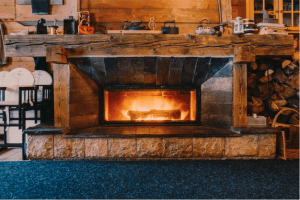How to Warm Your Basement with Flooring
The leaves are changing and the nights are getting longer, which means that winter is on its way. If you’ve chosen to turn your home’s basement into a separate living space—whether it’s a game room, movie lounge, or man cave—you’ve probably discovered the challenges of keeping it warm as temperatures drop. Fortunately, there are a couple of ways you can add some extra warmth and comfort just by considering your flooring. Read these tips from Redfin!

Add or Replace Carpet
In some cases, you can insulate and warm your basement without adding additional heat sources! Simply installing carpet can make the area more energy-efficient and better able to retain heat. Carpet is made up of fibers that dissipate heat slower than tile or the concrete slabs that many unfinished basements have. Carpeting your basement, or even laying down thick floor rugs, helps keep heat in the room and stops it from seeping into the slab flooring.
Before you choose to carpet your basement, there are a couple of things to consider. First, if you have a leak or flooding issue, don’t carpet your flooring until the leak is fixed. Second, determine how high you want your pile height. If you have problems with spiders or other bugs in your basement, it’s easy for them to hide and lay eggs in high-pile carpeting. In these cases, a Berber carpet or carpet tiles may work best.
Install Heated Flooring
If you’ve already added or replaced your carpet and your basement is still too cold, you may need to add additional heat. If you want your feet to feel extra toasty, you can have heated flooring installed in your basement. Basement floor heating uses either electrical wiring or circulates hot water to provide low-level, dispersed ambient heating to the floor. This can be used under a cement floor or under tiling, hardwood, or carpeting. The radiant heated flooring can give overall warmth to the basement without drying out the air.
Radiant floor heating systems are easy upgrades when you’re building a new home. However, if you want to install heated flooring in a basement that’s already been established, then you’ll probably have to have the slab flooring removed, the heated floor installed, and a new cement floor poured. This project can take time and be costly, so it’s important that you shop around for quotes. As always when you’re installing your heating components, make sure to consult with a licensed contractor to ensure that you’re following safety protocols and meeting your local building codes.
Staying warm in the winter can be simple. With just a few upgrades, you can continue to enjoy your basement during the colder months, regardless of how low the temperatures get.
